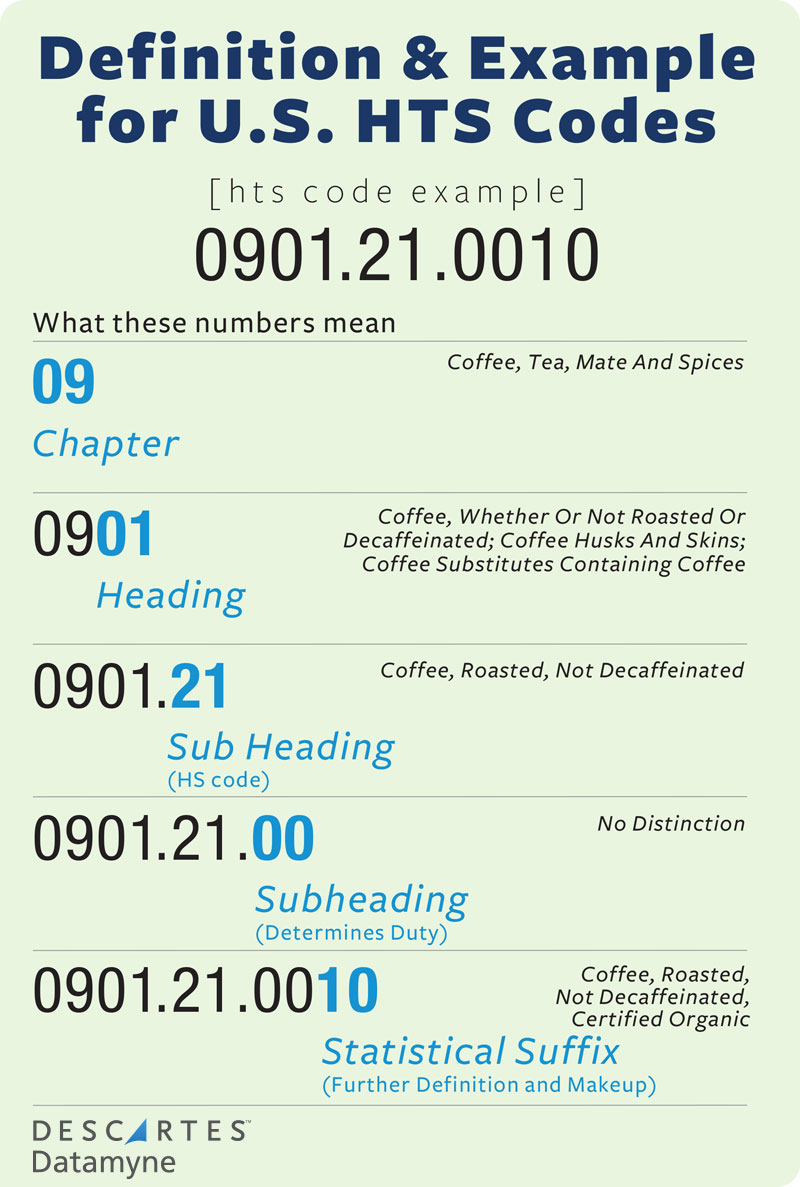HS or Harmonized System for the classification of products traded cross border is a nomenclature used to categorize goods for Customs declarations. Customs in many parts of the world will decide what license requirements are necessary and what duties must be paid based on the HS code of the product. Theoretically, the descriptions for HS code Headings in the tariff book for all countries are harmonized to the first 6 digits.

The HS classification book consists of about 5,300 headings and subheadings. These are grouped into 21 Sections that span 99 Chapters. In theory, the WCO tariff book arranges product descriptions from raw states to more complex products. The process of HS classification is carried by applying 6 rules of tariff classification, of which the first 4 are applied in consecutive order. These rules are known as the general interpretative rules of classification. However, the application of these rules can give varied results as some elements of these rules are open to interpretation. For example, the concept of essential character plays a big part in the classification of any composite product or mixture. However, there is no fixed way to determine the essential character and it can be determined based on factors such as the value, function, weight and/or size of the sub-components of the product.
Some Customs organizations allow traders to submit ruling requests. These requests will result in a legally binding decision from Customs on the HS code to use for any product. This protects the importer from future challenges from Customs on the HS codes declared for imports. Applying for a ruling will typically require that the trader provides extensive documents to Customs authorities. This could include intellectually protected information, blueprints, recipes, or ingredient lists. Hence, traders should be prepared to release this information to Customs if they choose to apply for a ruling. Once a ruling result is provided, the trader no longer has an option but to use the HS code provided by Customs. SEO Service
The use of wrong HS codes when making import declarations is a common issue that Customs audits discover. Customs can choose to claw back unpaid duties from traders if audits reveal that the trader paid lower duties due to the use of a wrong HS code. Also, if the wrong HS code was used with a Free Trade Agreement, it is also possible for the Customs authorities to claw back the duty waiver enjoyed. Depending on the laws in different countries, Customs can choose to scrutinize imports over an extended period of between 2 to 5 years. So the total penalty can be a significantly large amount.
It is usually highly recommended for all
traders involved in import and export activities to maintain a comprehensive HS
classification compliance program. This includes regular reviews and audits by
a third-party auditor. Any published rulings should be reviewed periodically
and an assessment needs to be made if the ruling outcome is material to the
products traded by the business. Since the rules of classification are not easily
understood and applied by most traders, it is best for new traders to seek a
professional’s help to do classification for complex products or to apply for
a ruling. Wrong HS codes are not something easily corrected over time and it is
best to avoid making a wrong classification in the first place.
No comments:
Post a Comment